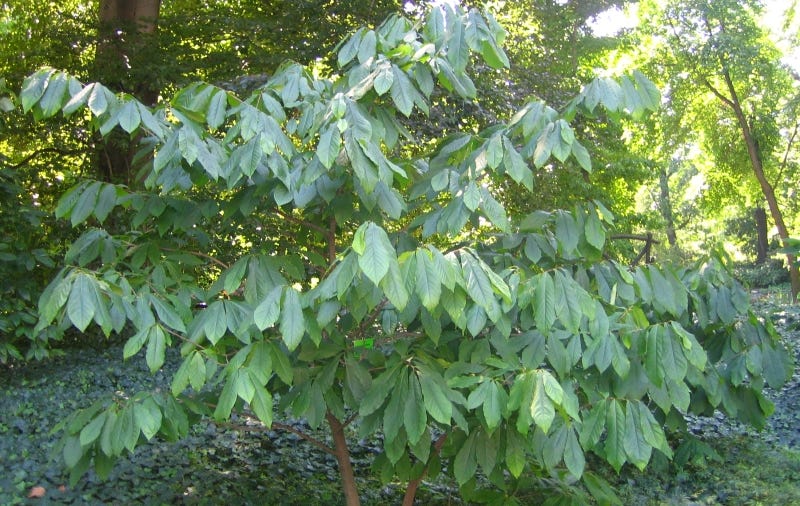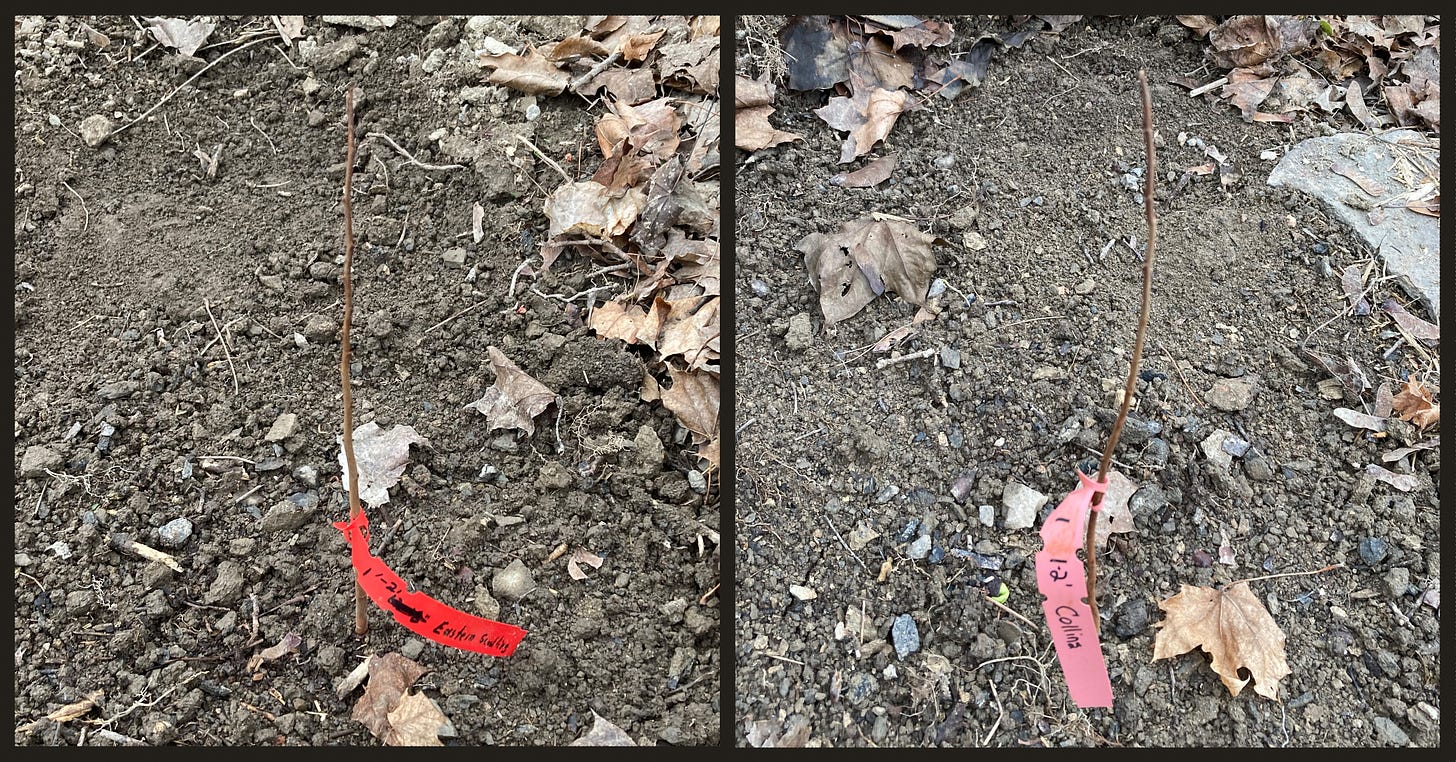Pawpaws
The first day of spring is this Wednesday, and I celebrated by planting a pair of pawpaw trees—although not the beauty shown above. Pawpaws are shade-loving trees, and I wanted pawpaws in a section of my backyard under my neighbor’s pesky Norway maple, whose extensive root system makes it hard to dig a planting hole for anything larger than a sapling. (If your garden is not in Norway, I advise against the Norway maple, a beautiful but aggressive tree whose seedlings must be removed by the hundreds every spring.) Unlike Norway maples, pawpaws are native to the Eastern US, and are a lovely small tree that will bear tasty fruit.
The bare-root saplings I planted came from a mail-order nursery in Georgia, Willis Orchard Co. (willisorchards.com), which offers inexpensive but well-grown pawpaw saplings as small as 12-18 inches tall. Two varieties must be planted to pollinate each other and produce fruit. I planted a Collins Select for higher quality fruit than the typical wild tree, and an Eastern Seedling, a wild type to pollinate the Collins.
Although I have never eaten a pawpaw, they are said to be delicious, tasting like a cross between banana and mango, or maybe pineapple and banana. It’s sometimes called the “Appalachian banana.” Because the fruit is too delicate to ship well, you won’t find it in grocery stores, though you might be lucky enough to find it at a farmer’s market in pawpaw country.
Keep reading with a 7-day free trial
Subscribe to The Generous Garden to keep reading this post and get 7 days of free access to the full post archives.






